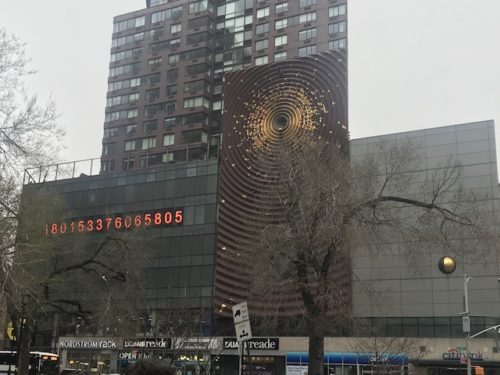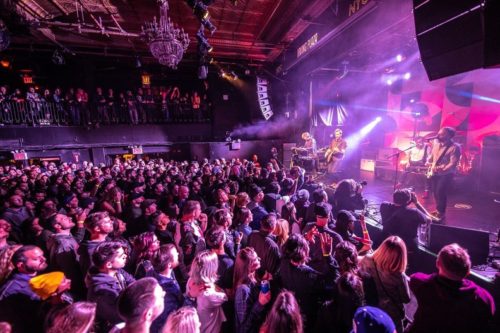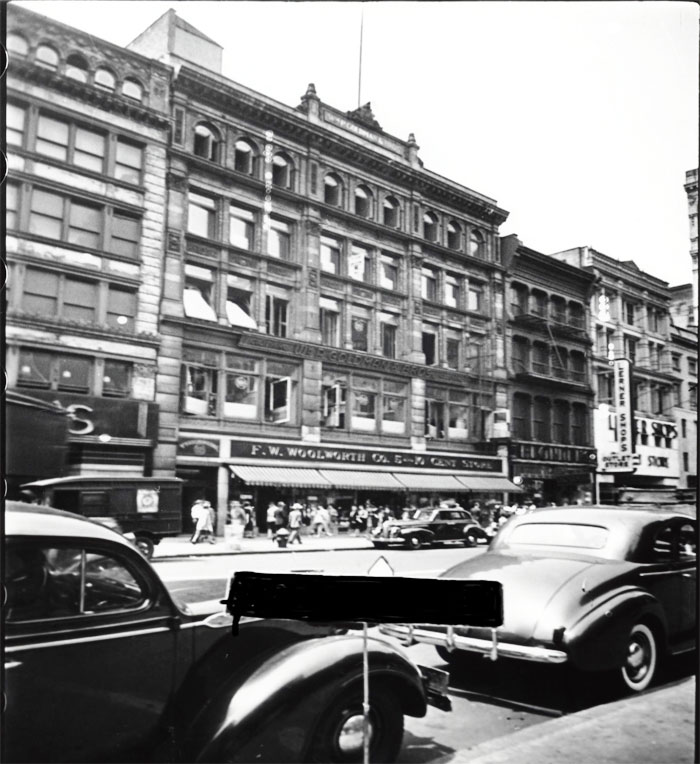From Metro:
The L train “slowdown” will come with bus priority on 14th Street after all.
The de Blasio administration will ban private through-traffic on 14th Street between Third and Ninth avenues as part of a new pilot street design to help speed up buses during the L train’s Canarsie tunnel reconstruction, according to a draft release of the plans obtained by amNewYork.
But the changes won’t come until June, more than a month after the subway rehabilitation work begins.
Under the city’s plans, the new stretch of 14th Street will consist of four lanes, two in each direction: the center lanes will be dedicated to bus and truck traffic, while the outer curbside lanes will be reserved for truck loading and local traffic looking to make pickups, drop-offs or to access garages along the block.
Private vehicles in these lanes will be required to turn right, off the street, at the next possible opportunity and left turns will be barred. The city, in the draft release, said it drew inspiration from the King Street project in Toronto, where similar vehicular restrictions were put in place to improve cripplingly slow streetcar service on the major city artery.
A City Hall spokesman did not immediately respond to questions on the draft plan and declined to confirm its details.
New M14 Select Bus Service will roll out with the street changes in June, along with additional painted pedestrian space at intersections. The city plans to use automated cameras to enforce the rules of the road.
The city Department of Transportation will conduct “significant outreach,” including to the five different community boards overlapping 14th Street, and will promote education campaigns for people who commute on the block, the draft release states. There doesn’t appear to be any space dedicated for parking in the plan.
The city also plans to announce that bike infrastructure projects on Manhattan’s 12th and 13th streets, as well as Grand Street in Brooklyn, will be made permanent. Grand Street’s protected bike lanes will be adjusted to add more loading zones and metered parking, and to “help accommodate the needs of industrial businesses along this section of the corridor,” according to the draft release.
Under the original plan, the city had pitched a bus-only corridor along 14th Street for 17 hours of the day, but from the outset, the DOT had assured that local pickups and drop-offs would be accommodated.
The city has been criticized for dragging its feet on the fate of 14th Street. The new design comes just days before L train tunnel reconstruction begins Friday evening. Advocates have long called for a dedicated busway on 14th Street to help alleviate potentially dangerous overcrowding at stations during the work, which will take place during nights and weekends for 15 to 18 months.
During the night-and-weekend work, the MTA will run three trains per hour, at 20-minute intervals, between the Bedford Avenue station and through Manhattan. That service schedule translates to an 80% reduction in trains at certain hours. The authority advised riders this week that they may not be able to even fit on the first trains rolling into their stations.





